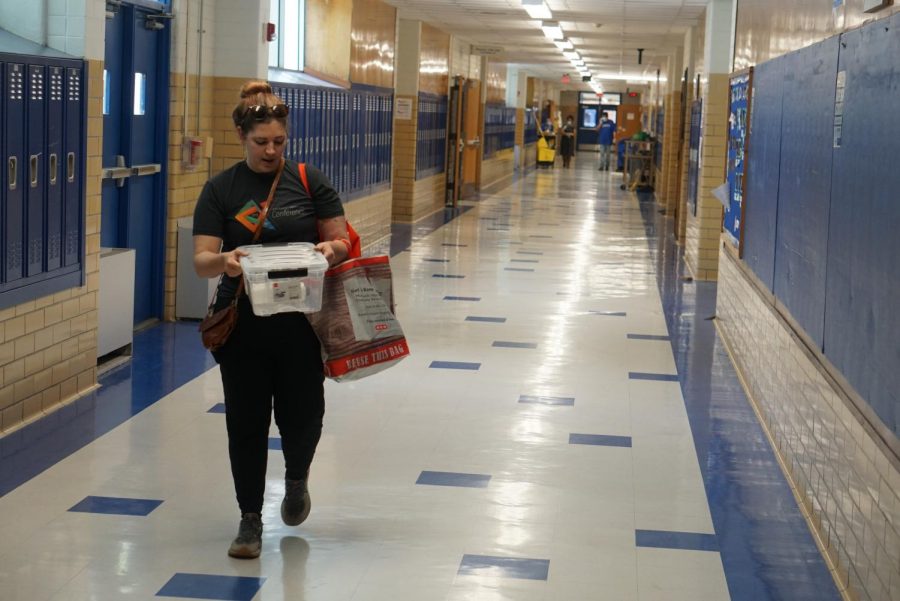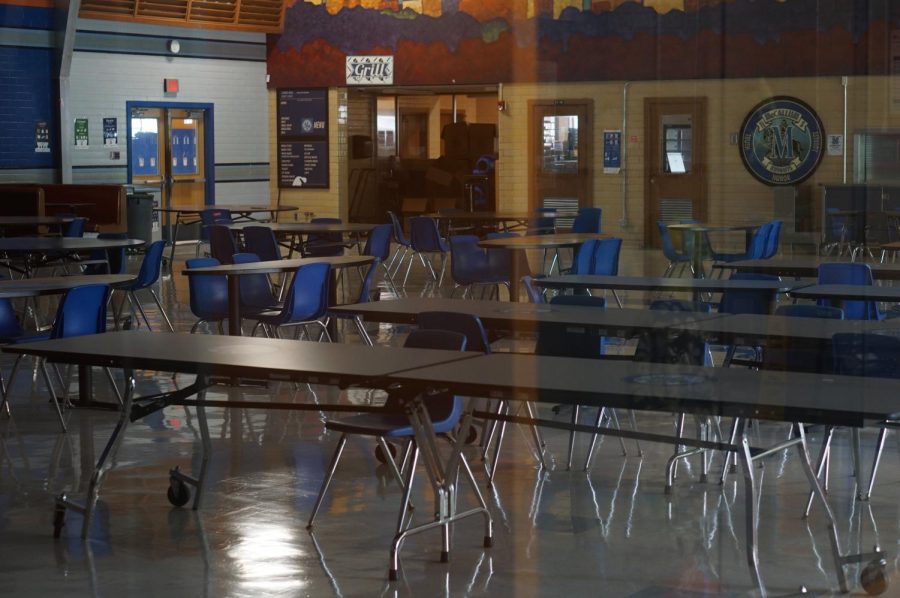When we were all first sent home last semester the virtual learning format was focused on students’ well-being. Weekly assignments were limited, the school week was shortened and the format was 100 percent virtual from March 13 to May 28.
What we want to know is, why is this abundance of caution disappearing before our very eyes? During the span of the virtual learning that took place in the spring semester, new cases per day in Travis County stayed under 90, according to Austin Public Health. Now, 185 new cases were reported by Austin Public Health just under three weeks ago and the district believes that it’s safe to open up to 25 percent capacity as well as force teachers to go back to school. When you look at the facts, it is not any safer than it was last year to go back to school, yet the district is changing its plan.
Not only is AISD forcing teachers to go back to school, according to the Austin ISD website, but the district is also exposing teachers to 25 percent of the building capacity starting Oct. 5 followed by 50 percent capacity two weeks later. Only teachers with approved accommodations are the exception to this rule, but that doesn’t take into account the teachers who have at-risk family members at home.
Macjournalism first reported the news of teachers’ forced return to school with an Instagram post on Sept. 17. The news was met with an outpouring of disappointment from the McCallum community over Austin ISD’s decision to send teachers back. The post received 99 comments lamenting the situation. Teachers expressed their concerns about returning to school, and students offered their apologies, their disappointment and their anger.
Sophomore Anasofia Eyman voiced her concerns in the comments. “People shouldn’t have to go back if they don’t want to,” Eyman said. “Teachers and staff have helped us through our entire lives and this is how we repay them? They deserve more than this.”

McCallum chemistry teacher Robert Ely explained in the comments that even though he has a 97-year-old at home, he will be required to return to school on Oct. 5. Some of Ely’s students replied with their apologies, including junior Jamie Winter.
“That is horrifying,” Winter said. “I’m so sorry that our district cares so little about the teachers [who] are the sole reason the system works in the first place.”
Austin ISD was accepting applications for exemption from the return to school up until Wednesday, Sept. 23. Employees who fell under the CDC at-risk category, including people age 65 and older, people with certain medical conditions and pregnant people, were allowed to submit an application to be reviewed by the Employee Relations department and would be accepted or denied within two weeks of submitting their application. Employees could also apply for a flexible work option under the Americans with Disabilities Act or request leave. Employees with family members in the at-risk category did not qualify for immediate exemption, but could request leave.
I’m so sorry that our district cares so little about the teachers that are the sole reason the system works in the first place.
— junior Jamie Winter
If you’re wondering what you can do to help our teachers, the answer is actually pretty simple: don’t come to school Oct. 5.
Of course, there are exceptions. In a mass email to parents this summer, LASA principal Stacia Crescenzi offered three “good reasons” to send your kid back to school: “spotty internet, broken devices, access to free and reduced breakfast and lunches, and at home safety.” When asked if she was actively discouraging students from returning in-person, she responded:
“I am, sort of. If your student really does need to come to campus for any of the reasons I mentioned earlier then, by all means, I want them to feel welcomed. We will do everything we can to make them not feel weird and isolated,” she said. “But the threat of illness and death is real. As important as I think school can be to a better functioning democracy, I don’t want to live with the guilt or have students live with the guilt of staff getting sick or dying and when it was preventable.”
McCallum’s interim principal Nicole Griffith said that she feels for the teachers who have to go back tomorrow.
“Students have a choice, staff members are no longer having that choice and cannot teach from home. It is very scary, and we are trying to do that best that we can to minimize the spread of COVID.”
Griffith urged that teenagers consider the larger community when making decisions.
“It’s scary cause you don’t know quite how it’s going to affect you,” Griffith said. “Teenagers might not feel as scared for themselves personally, but we’re all connected humans, and we’re all connected with people who are more vulnerable and who [are] maybe closer to harm.”
For those McCallum students who require on-campus learning, there will be a “learning group” option which groups 6-9 students with one teacher who oversees their virtual learning. Griffith mentioned the learning group model as a safety precaution to minimize movement and interaction on campus, which combined with mandatory facial masks and frequent hand washing will minimize the risk of COVID spreading on campus.
The learning group version of in-person learning has the ability to level the playing field with remote learning. For students needing to return to campus for equity reasons, it’s an admirably safe option. But the justified reasons to come back to school in person basically end there. While McCallum English teacher Nikki Northcutt is willing to return for her students needing extra help during this time, she urges families to give careful consideration to the weight of their decisions.

“I want to be there for families for whom virtual learning is not a viable option,” Northcutt told The Shield. “For families with the means and abilities, however, I am telling those who ask to please stay home.”
The harsh reality is school is not a restaurant, or dance club or party. It’s not a place to fulfill student’s socializing needs. Nobody is denying how emotionally taxing the social isolation of the pandemic has been on students, but here, we must stop and ask the question: Is going back to school to fulfill social “needs” worth putting the safety of teachers and their families at risk?
It’s also important to examine just what students would be coming back to on Oct. 5. What students will experience if they choose to opt into in-person learning will not be “back to normal.”
As important as I think school can be to a better functioning democracy, I don’t want to live with the guilt or have students live with the guilt of staff getting sick or dying and when it was preventable.
— LASA Principal Stacia Crescenzi
Students will be doing the same virtual classes, but will be Zoom-ing in from school. They will be expected to wear masks and stay in the same classroom with the same group of kids all day. What there won’t be are passing periods, lunch, or any difference in the presentation of lessons. The caliber of education is the same across the board. For more information regarding what in-person learning pods will look like, refer to McCallum’s Reopening Plan Infographic here.
And even if in the weeks to come, AISD begins to shift gears, and allow passing periods, as the superintendent suggested she might in her letter to parents on Wednesday, the same attitude must remain: stay vigilant and if you can, stay home.
AISD’s decision to force teachers to go back on Oct. 5 has made many question where AISD’s true priorities lie. The safety and lives of beloved MAC teachers now lies in the hands of students and parents.
“We all want normalcy, but this isn’t about desire,” Northcutt said. “This is about safety.”
–with reporting by Javier Vela
This story was originally published on The Shield Online on October 4, 2020.































![IN THE SPOTLIGHT: Junior Zalie Mann performs “I Love to Cry at Weddings,” an ensemble piece from the fall musical Sweet Charity, to prospective students during the Fine Arts Showcase on Wednesday, Nov. 8. The showcase is a compilation of performances and demonstrations from each fine arts strand offered at McCallum. This show is put on so that prospective students can see if they are interested in joining an academy or major.
Sweet Charity originally ran the weekends of Sept. 28 and Oct. 8, but made a comeback for the Fine Arts Showcase.
“[Being at the front in the spotlight] is my favorite part of the whole dance, so I was super happy to be on stage performing and smiling at the audience,” Mann said.
Mann performed in both the musical theatre performance and dance excerpt “Ethereal,” a contemporary piece choreographed by the new dance director Terrance Carson, in the showcase. With also being a dance ambassador, Mann got to talk about what MAC dance is, her experience and answer any questions the aspiring arts majors and their parents may have.
Caption by Maya Tackett.](https://bestofsno.com/wp-content/uploads/2024/02/53321803427_47cd17fe70_o-1-1200x800.jpg)
![SPREADING THE JOY: Sophomore Chim Becker poses with sophomores Cozbi Sims and Lou Davidson while manning a table at the Hispanic Heritage treat day during lunch of Sept 28. Becker is a part of the students of color alliance, who put together the activity to raise money for their club.
“It [the stand] was really fun because McCallum has a lot of latino kids,” Becker said. “And I think it was nice that I could share the stuff that I usually just have at home with people who have never tried it before.”
Becker recognizes the importance of celebrating Hispanic heritage at Mac.
“I think its important to celebrate,” Becker said. “Because our culture is awesome and super cool, and everybody should be able to learn about other cultures of the world.”
Caption by JoJo Barnard.](https://bestofsno.com/wp-content/uploads/2024/01/53221601352_4127a81c41_o-1200x675.jpg)






